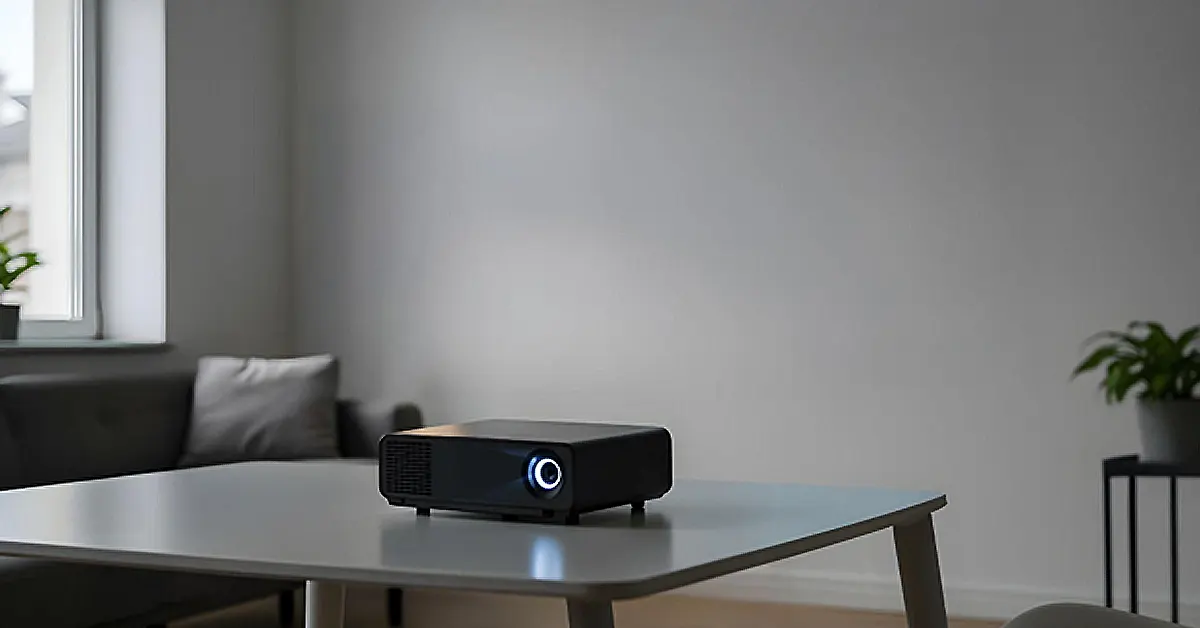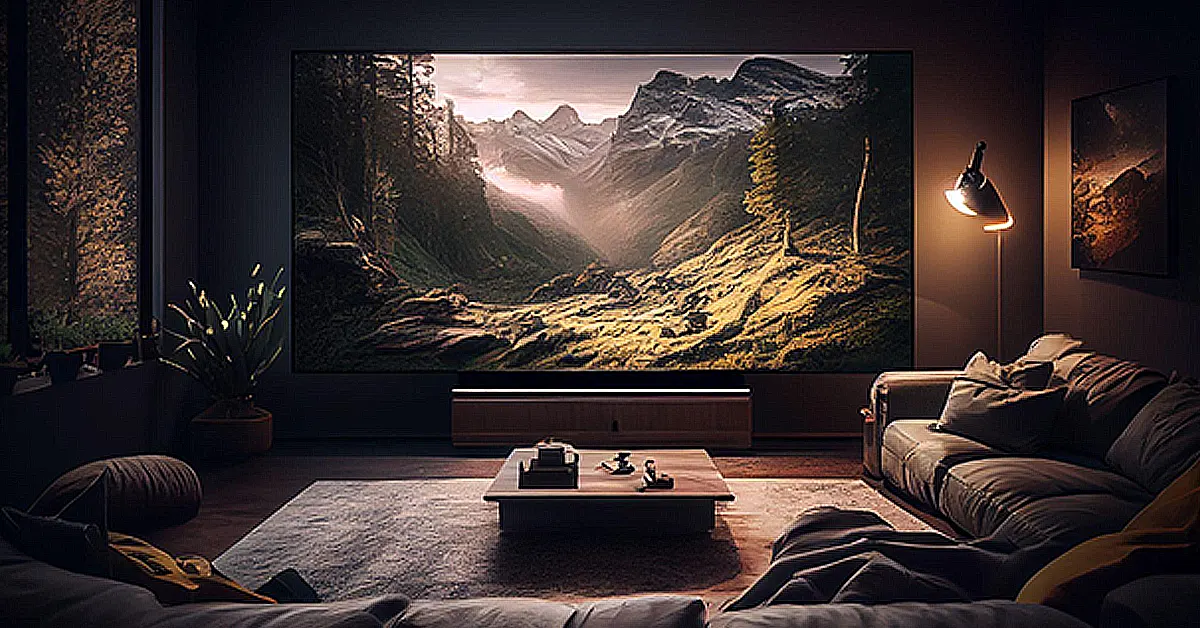Remember when HDTVs first came out and everyone was amazed by the picture quality? Well, technology keeps moving forward, and now we’re in the 4K era. I held off upgrading my home projector for years, thinking my old 1080p model was “good enough.” Boy, was I wrong! After finally making the switch to a 4K projector last year, I can’t believe what I was missing. Whether you’re setting up a meeting room projector for your office or creating the ultimate movie night at home, 4K projection is a game-changer. Let me walk you through why you might want to make the jump, too.
In This Article
Understanding 4K Technology and 4K Projectors
So what exactly is 4K? In simple terms, it means there are about 4,000 pixels horizontally across your screen. More specifically, a 4K image contains 3840 x 2160 pixels – that’s over 8 million pixels total! Compare that to a standard HD (1080p) image with just 2 million pixels, and you can see why there’s such a difference.
I remember explaining this to my nephew by comparing it to building with Lego bricks. If you have 4 times as many bricks, you can build something with way more detail. That’s essentially what 4K does – it packs in 4 times more image information than regular HD.
A 4K projector takes this ultra-detailed image and displays it big, really big, while maintaining that incredible clarity. The first time I showed a 4K nature documentary on my living room wall, my wife gasped at how real it looked. You could see individual feathers on birds and tiny water droplets on leaves that would have been just a blur before.
1080p Projector vs 4K Projector: What is the difference?
The jump from 1080p to 4K isn’t just a small improvement – it’s like putting on glasses for the first time if you’ve been nearsighted your whole life. Here’s what I noticed immediately:
The clarity is mind-blowing. Text looks razor-sharp, even when projected huge. This is especially important for a business projector showing spreadsheets or detailed graphs. During a recent budget presentation, everyone could read the numbers clearly from anywhere in the conference room.
The colour reproduction is much better, too. My old projector made everything look slightly washed out. The 4K model shows subtle colour gradients that simply disappeared before. Watching a sunset scene in a movie now shows dozens of orange and pink tones instead of just a few.
And let’s talk about that “screen door effect” – you know, when you can see the tiny gaps between pixels? With 1080p, I always noticed it, especially with bright scenes. With 4K, it’s completely gone unless you stick your face right up to the wall.
4K TV vs 4K Projector: which is better?
This is a question I wrestled with, too. Why not just buy a big 4K TV instead of a projector? After trying both, here’s my honest take:
Size matters. Even the biggest affordable TVs top out around 85 inches, while a 4K projector can easily give you a 100-120 inch display or larger. My current setup projects a 110-inch image, and it completely transforms the viewing experience in a way no TV can match.
TVs win on brightness for very sunny rooms. But with decent blinds or for evening use, modern 4K projectors are plenty bright. I use mine in our living room with ambient light, and it looks great.
Projectors are easier to upgrade over time. When I want a bigger screen, I just move the projector back a bit. With a TV, you’d have to buy a whole new unit.
Cost per inch heavily favours projectors. A decent 85-inch TV might cost $1,500-2,500, while many good 4K projectors start around $1,000-1,800 and can display images twice that size.
Reasons to Upgrade to a 4K Projector
Beyond the technical differences, here’s why I think upgrading makes sense:
Future-proofing: More and more content is being produced in 4K now. Netflix, Disney+, Amazon Prime – they’re all pushing 4K content. Gaming consoles like PS5 and Xbox Series X are designed for 4K. Your next five years of entertainment will likely be in 4K.
Versatility: I use my projector for everything from big client presentations to weekend movie marathons with the kids. The jump in quality affects every use case positively.
The wow factor: I know it sounds silly, but there’s something magical about having a cinema-quality image in your space. Clients are genuinely impressed during meetings, and friends comment on movie nights.
Eye comfort: This surprised me, but the extra clarity reduces eye strain during long viewing sessions. My eyes don’t have to work as hard to make out details.
Real estate efficiency: Unlike a massive TV that dominates a wall permanently, a projector gives you your space back when not in use. This was a huge selling point for my wife!
Choosing the Right 4K Projector for You
If I’ve convinced you to make the upgrade, here are some real-world tips from my search:
Brightness matters: Look for at least 2,000-3,000 lumens for rooms with some ambient light. My first 4K projector was too dim at 1,500 lumens, and I ended up upgrading again.
Consider the throw distance: Measure your room! Some projectors need to be placed far back to create a large image, while “short-throw” models can sit much closer to the wall. I learned this the hard way after initially buying one that wouldn’t work in my space.
Sound options: Some projectors have decent built-in speakers, but they rarely compare to even a basic soundbar. Budget for sound if you care about the audio experience.
Connection options: Make sure it has the ports you need. I needed multiple HDMI inputs for my laptop, streaming stick, and game console. Some newer models even have USB-C, which is super convenient.
Lamp life: LED and laser light sources last much longer than traditional bulbs and maintain brightness better over time. My LED-based projector is rated for 30,000 hours – that’s over 10 years of daily use.
Key Takeaways
Making the jump from 1080p (FHD) to 4K (QHD) is a significant upgrade that you’ll notice immediately. While good 4K projectors aren’t cheap, they’re an investment that transforms both business presentations and home entertainment.
For businesses, a 4K business projector makes your content look more professional and ensures everyone can see the details. For home use, it’s like having a personal movie theatre that disappears when not needed.
Having lived with both FHD vs QHD projection, I can confidently say the difference is worth it. Start saving those pennies, your future self will thank you for it when you’re enjoying crystal-clear, massive images that make your old setup look like a flip-book by comparison.





